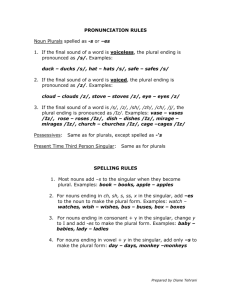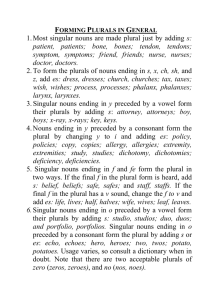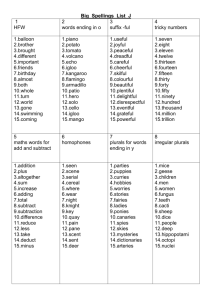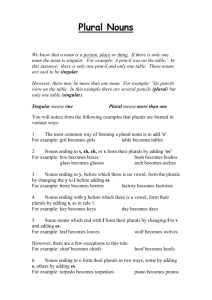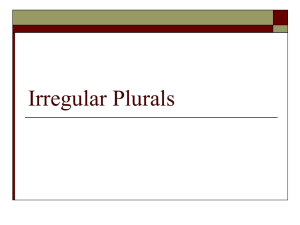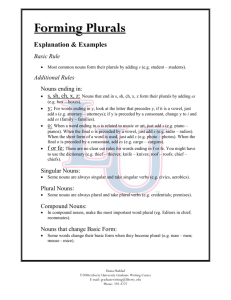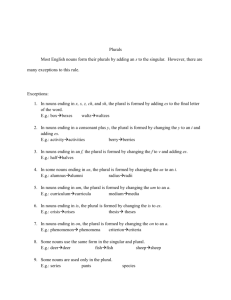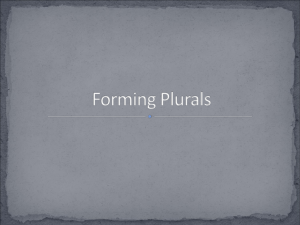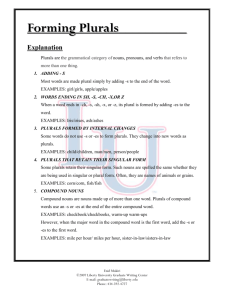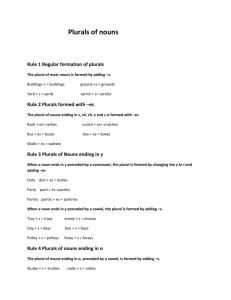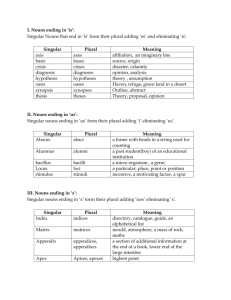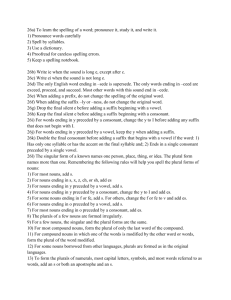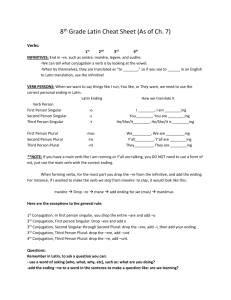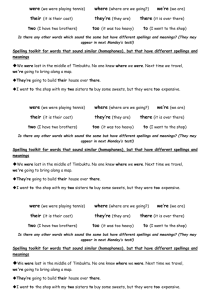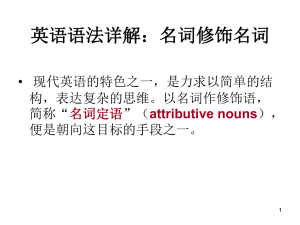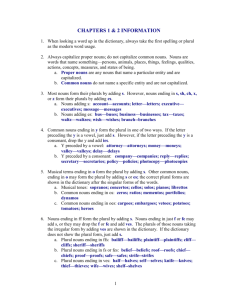Nouns with Latin and Greek plurals
advertisement
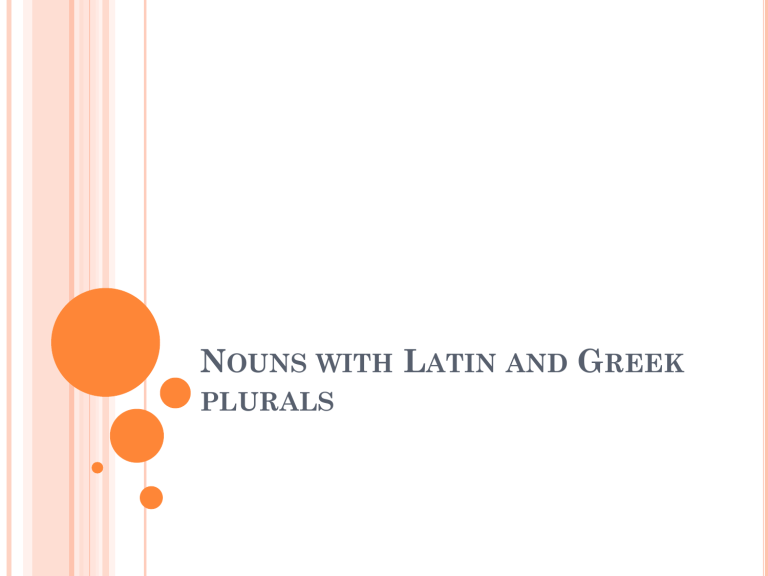
NOUNS WITH LATIN AND GREEK PLURALS THERE ARE SOME NOUNS IN ENGLISH OF LATIN AND GREEN ORIGIN WHICH DO NOT FORM PLURAL BY ADDING AN –S. THEY ARE VERY COMMON IN THE LANGUAGE OF SCIENCE. Nouns ending in –us with plurals ending in –i. Singular NUCLEUS = jezgro Plural NUCLEI RADIUS = poluprecnik RADII FUNGUS = gljivica FUNGI FOCUS = ziza, sredist FOCI Nouns ending in –is with plurals ending in –es. Singular Plural BASIS = osnova BASES THESIS = teza THESES AXIS = osa , osovina AXES INDEX INDICES Nouns ending in –a with plurals ending in –ae. Singular Plural ANTENNA = antena ANTENNAE FORMULA = formula FORMULAE Nouns ending in –um with plurals ending in –a. Singular Plural DATUM = podatak DATA MEDIUM = sredstvo, posrednik, medij STRATUM = sloj MEDIA STRATA Nouns ending in –on with plurals ending in –a. Singular Plural PHENOMENON = fenomen, pojava CRITERION = kriterijum PHENOMENA CRITERIA USE THE CORRECT FORM OF THE NOUN IN BRACKETS. ___________ (nucleus) are located in the centre of the atoms. The __________ (radius) of electrons are extremely small. Orthorhombic system is characterized by three unequal _________ (axis). Lavoisier explained a number of chemical ________ (phenomenon). Geological _________ (stratum) are visible in some canyons. In order to become laws all _____________ (hypothesis) must be experimentally proved. USE THE CORRECT FORM OF THE NOUN IN BRACKETS. Nuclei are located in the centre of the atoms. The radii of electrons are extremely small. Orthorhombic system is characterized by three unequal axes. Lavoisier explained a number of chemical phenomena. Geological strata are visible in some canyons. In order to become laws all hypotheses must be experimentally proved.
